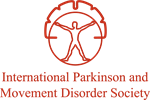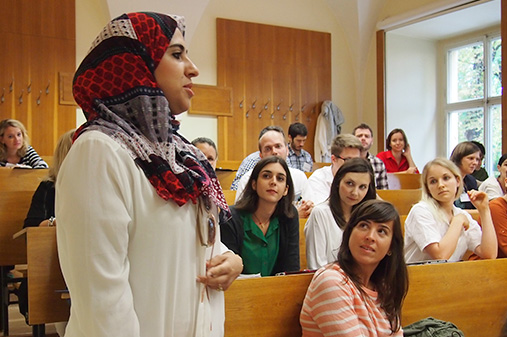Decoding epilepsy dyskinesia syndrome: Clinical clues and genotypic spectrum
Dr. Hugo Morales Briceno: [00:00:00] Welcome to today's episode of the MDS Podcast, the official International Parkinson and Moving Disorder Society podcast. I'm your host Hugo Morales, and our focus today is on epilepsy dyskinesis syndrome. A group of neurogenetic disorders that challenge how we think about the boundaries between epilepsy and movement disorders. Despite its growing recognition, the syndrome remains under characterized with wide ranging genetic causes, diverse clinical presentations and variable treatment responses. In a landmark multinational study published in Brain Journal last month. Researchers have shed light on the molecular and clinical landscape of epilepsy dyskinesia syndrome. To help us unpack these findings, we're joined by Dr. Darius Ebrahimi-Fakhari, director of the [00:01:00] Movement Disorders Program at the Department of Neurology, Boston Children's Hospital and Harvard Medical School. Welcome Darius.
View complete transcript
Dr. Darius Ebrahimi-Fakhari: Nice to see you Hugo. Thank you very much for having me.
Dr. Hugo Morales Briceno: It's a pleasure to have you here. Now let's start with the big picture of the paper. So to the audience that may be knowledgeable about the syndrome, but also the neurologist, movement disorder specialist that may have seen this syndrome. What is epilepsy dyskinesia?
Dr. Darius Ebrahimi-Fakhari: Yes. Thank you for the question, and thank you for highlighting our work in this podcast. I really appreciate it. To start with a definition, epilepsy dyskinesia syndromes are a large and heterogeneous group of neurological disorders defined by the presence of both epilepsy and movement disorder.
These disorders may be acquired, they may have an acquired cause, for example, hypoxic ischemic injury or autoimmune encephalitis. But more importantly, there's [00:02:00] a growing list of genetic conditions, of monogenic diseases that can cause both epilepsy and movement disorders. So this paper is really about defining the spectrum of genetic epilepsy dyskinesia syndromes, and I think there are three key reasons why this is important for us to better understand.
First, I think there's a high clinical relevance. For us as pediatric movement disorder specialists, epilepsy dyskinesia syndromes are common. They're common in our clinics. The second is, and this inspired this work, is that there's considerable complexity. There is considerable genetic heterogeneity, but also phenotypic pleiotropy, and this can complicate diagnosis and management.
What I mean by that is that many genes are associated with overlapping phenotypes. For example, dystonia has been linked to more than 30 different genes. Conversely, a single gene can cause a wide range of presentations as seen, for example with PRP2, where you have benign familial epilepsy, but also [00:03:00] paroxysmal dyskinesia or ATP1A3, which I think is a great example of a disorder, a gene that can cause many different clinical entities. They're these four canonical entities. So these examples, they illustrate the blurred boundaries between phenotypes and molecular mechanisms and genotype. Now, the third reason why I think this topic is important is that there's tremendous therapeutic potential. There is an urgent need to better understand these disorders in their natural history because we have gene-based therapies emerging and we need to be ready to not only study them in the context of epilepsy, but also in the context of their movement disorder presentation.
Dr. Hugo Morales Briceno: Thank you Darius. I think that this work has enormous relevance for clinical practice around the world. And just starting by the description of the clinical syndrome as such, and the various combinations of immunology, just tell us about the complexity of the epilepsy dyskinesia and how we just [00:04:00] started to understand the spectrum of these disorders.
But I wonder from. All the amalgamation of clinical cases through different centers around the world and expert centers. Can you tell us more about how epilepsy dyskinesia presents in the clinical spectrum, including the phenomenologies, for example, where the most common phenomenologies in the syndrome.
Dr. Darius Ebrahimi-Fakhari: Absolutely. Very happy to. And before I start, I say that this was the effort of many people. This was a wonderful collaboration made possible through the Movement Disorder Society special interest group for pediatric movement disorders, which allowed us to use a vast network of collaborators to conduct this cross-sectional analysis of epilepsy dyskinesia syndromes.
So in this study, we've had the opportunity to analyze over 600 patients across 30 centers from 25 countries. And we found epilepsy dyskinesia syndromes related to [00:05:00] 74 different genes. Three findings stand out. First, while all patients presented with movement disorders, only about two thirds had comorbid epilepsy.
So this indicates to us that these genetic syndromes can primarily manifest as movement disorders. Second, over half of the patients had mixed movement disorders, often a combination of dystonia and chorea, of dystonia and ataxia, and highlighting the complexity of these phenotypes. Third. Through an unbiased analysis, we were able to define 12 functional gene clusters, linking biological pathways to clinical features and even treatment responses.
So to come back to your question, most of what we've learned was about the 10 most commonly implicated genes. Those included genes like MECP2, ATP1A3, GNAO1, PRRT2 , CACNA1A, and others. When it came to the phenotype, we've learned, I think, a great deal about this group of disorders.
[00:06:00] First, most show a hyperkinetic movement disorder. 76% had a hyperkinetic movement disorder and only about 2% displayed a hypokinetic disorder, Parkinson's. As I've already pointed out. Most, the majority had more than one movement disorder. The leading phenomenology was dystonia. The most common leading phenomenology was dystonia, followed by stereotypies and ataxia.
If you want to break down this very complex group into different categories I think of it this way. There are subgroups with a distinct phenomenology. We have disorders that present with early onset epileptic encephalopathy and status dystonicus. We have disorders with developmental epileptic encephalopathy, and very prominent dystonia, or prominent chorea, or prominent stereotypies, or we have lastly, the group of paroxysmal dyskinesia.
So these are distinct groups. What is more common, however, is that you have mixed phenotypes and these fall into different categories. Of epileptic encephalopathies and [00:07:00] hyperkinetic movement disorders or Parkinsonism, paroxysmal movement disorders. We certainly have the subgroups of inborn areas of metabolism and neurodegenerative diseases.
And lastly, the progressive myoclonic epilepsy. So you can start making sense of this vast spectrum by systematically analyzing these phenotypes. I think from a clinical standpoint, one group that I would point out is that there are, conditions, epilepsy dyskinesia syndromes that present with severe dystonia, including status dystonicus.
And we found that about 10 genes. Some of them rare, some of them well known, such as GNAO1 presented with frequent episodes of status dystonicus. These are clinically relevant findings because these are often the patients we have in our intensive care unit for treatment.
Dr. Hugo Morales Briceno: This, such a study in the design that when you get a lot of granularity of clinical data, but also genotypic data helps you to define this clusters. And from what I gather from this [00:08:00] study is that still, despite the advancement of genetic diagnosis in these cases. One of the mainstays of diagnosis still being the clinical phenomenology, characterizing the movment disorders and therefore the value of the expert diagnosis.
And to define it, this is dystonia, the pattern of dystonia, the differentiation between hyperkinetic disorders, which again you pointed out with, is mostly combined phenomenonology, which is difficult to ascertain sometimes. Can I ask in terms of the molecular diagnosis and such, so what did you find with cluster analysis and trying to discern the specific pathways and how that's helpful in the way of offering a specific treatment or evidence-based treatment according to the genotypes.
Dr. Darius Ebrahimi-Fakhari: Thank you. So I think we learned a couple of interesting things through an unbiased view on this and [00:09:00] the first thing I'll say is we started off by recruiting patients between the ages of zero and 18 years who had a molecularly confirmed diagnosis related to 105 genes that we defined through a consensus process as being able to cause epilepsy dyskinesia syndrome.
Despite the list carrying 105 genes, we only identified conditions related to 74 genes. So what this tells us is that there are some conditions that are exceedingly rare that we don't even see in, well over 30 different sub-specialize centers across the world. So most of what I'm gonna talk about is actually related to just a handful of genes, which explains the majority of cases.
This includes the common genes I've mentioned, MECP2, ATP1A3, GNAO1, PRRT2, SLC2A1, and CACNA1A. But to move beyond individual genes, we performed a network-based cluster analysis and [00:10:00] identified 12 biologically meaningful gene groups. These clusters center around very common themes such as ion channels, G-protein signaling, synaptic function, transcriptional regulation, autophagy.
Each cluster, interestingly, is associated with a particular clinical pattern. And I think it's important for us to learn from these unbiased approaches because I think they can teach us, they provide us a window into the biology of these conditions. For example, ion channelopathies are often linked to ataxia, in the movement disorder side. G-protein signaling is often linked to chorea and dystonia. Synaptic genes, to combined epilepsy and complex movement disorder phenotypes. So the system level perspective provides a framework for understanding shared disease mechanism, but also helps us potentially identify therapeutic targets that extend across multiple genes.
And as a first, and this is really just a first step we asked, despite the fact where in a situation where we don't have gene-based therapies for most [00:11:00] conditions at the moment, can we learn something from looking at the symptomatic treatment that we provide to our patients and how they provide benefit or no benefit?
When we look at these as groups do disorders related to ion channels or G-protein signaling benefit from a certain type of symptomatic treatment? I think that's just the first step. I think in the future we'll have much better disease modifying therapies, but this is a first step to make sense of a vast amount of information.
Dr. Hugo Morales Briceno: Now having under understood through the spectrum of the syndrome do you see a better picture about what are the limitations or the current knowledge that we have in epilepsy dyskinesia syndrome? What is the pathway to follow in terms of is it early diagnosis a better recognition of the syndrome, or is it we need, do we need to redefine what are the characteristics of the syndrome as such?
Dr. Darius Ebrahimi-Fakhari: We look at this collaborative work as building a [00:12:00] foundation. So we describe in great detail the movement disorder spectrum related to these genes. And in fact the paper is accompanied by 23 videos that illustrate the spectrum. We wanted to make sure that people have a reference point for these phenotypes that we described, and there are many clinical pearls in the paper when it comes to movement disorder phenomenologies associated with specific genes. Again, coming back to the categories I've outlined, but this is really just the first step. The study has, or our field has three limitations at the moment.
The first is that all the data currently is retrospective or cross-sectional. We need longitudinal natural history studies to capture. Both onset and disease progression and to identify useful outcome measures for clinical trials. This has never been more important because there are gene-based disease modifying therapies coming down the pipeline.
And from what I can see, most of these therapies will be tested for the effect on epilepsy or development. But we know from clinical [00:13:00] practice that the movement disorders are as important for morbidity and health related quality of life. Second, although we collect cases worldwide, access genetic testing remains variable.
We saw it in the study as well, and many rare forms are underrepresented, so as we're shifting towards having better access to genetic diagnostics I think what we will learn is that many of these disorders aren't actually as as uncommon as we thought. They're actually more common. And secondly, I think we'll be able to diagnose these children earlier and earlier.
I'll give you an interesting clinical example from my practice. We start seeing children with known epilepsy dyskinesia genes way before they manifest with epilepsy or movement disorders. Because, they're picked up through early genetic testing for, let's say, developmental delay or concerns about autistic features.
So we have seen children with variants in GNAO1 and other genes long before they present with a movement disorder because there's concern that they will eventually, and I think this situation is gonna get more common in [00:14:00] our clinical practices as genetic testing is being used earlier and earlier.
The third limitation that we have is that treatment data is still largely anecdotal. There are no standardized clinical trials. So to move forward, I think we need more international collaboration. This was a first wonderful experience made possible, again, through the Movement Disorder Society Special Interest Group f or pediatric movement disorders. We need harmonized registries and we need to integrate genomics with additional, functional, and biomarker studies. This will allow us not only to refine genotype phenotype correlations. Also to design targeted interventions and apply them systematically.
And one thing I wanna highlight is that this is an evolving field. This is a field that is relatively new, although these genes have been known for a long time. I think we're just starting to appreciate the impact on our movement disorder practice in our clinics. And I think it's important for our generation to appreciate these challenges, but also the opportunities that lie in [00:15:00] studying these rare diseases. I also wanted to highlight along these lines that this work was led by two fellows in our group. It was led by Dr. Vicente Quiroz, who was completing his pediatric movement disorder fellowship with our program, and Dr. Julian Alecu, who's a physician scientist and conducted most of these analyses. All just to say that this is work for the future already being done by the next generation.
Dr. Hugo Morales Briceno: Fantastic. I would like to thank you for taking the time to, to give us your insights of the epilepsy dyskinesia syndrome. It is highly valuable for clinicians worldwide and both pediatricians and adult neurologists alike. And this is also in the context that many of these patients actually evolve into adulthood.
And so adult neurologists need to be aware of the syndromes. And the other part that also I noticed in your paper is very interesting is that epilepsy dyskinesia syndrome actually evolves over time in this part of the dyskinetic, or hyperkinetic future. There's [00:16:00] also hyperkinetic later on which is a very unique sort of progression of phenomenologies and gives the complexity of the syndrome itself.
Dr. Darius Ebrahimi-Fakhari: Yeah. Thank you for highlighting this. I completely agree. I think we were surprised to find that there's an evolution of movements disorder phenotypes and based on the data available and the statistical tools available to us, we were trying to model this, but certainly we need natural history studies to document this accurately.
You're absolutely right. This extends well into the adult age group, and I would encourage all of our colleagues in adult movement disorders to keep an eye out for these patients because not infrequently, I think these patients are under-recognized. And especially when it came to Parkinsonism, this mainly affected young adults with channelopathies and epileptic encephalopathies.
But their movement disorder didn't develop until the second or third decade of life.
Dr. Hugo Morales Briceno: Well, this concludes today's episode, and again, I'd like to [00:17:00] thank Dr. Ebrahimi-Fakhari for his insights into the syndrome epilepsy dyskinesia. Stay tuned for our next episode where we'll continue exploring the latest developments in movement disorders. Until then, stay curious and keep learning.
Dr. Darius Ebrahimi-Fakhari: Thank you. Thank you, Hugo.

Dr. Darius Ebrahimi-Fakhari, MD, PhD
Boston Children's Hospital
Harvard Medical School
Boston, MA, USA









